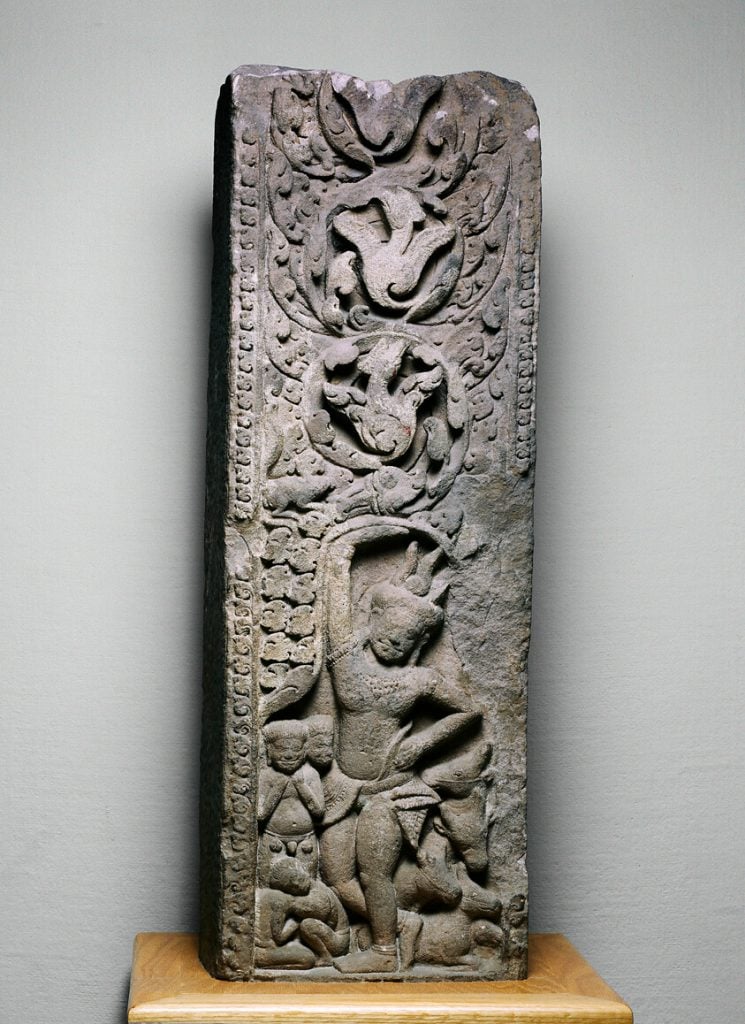Museums & Institutions
Art Institute of Chicago Returns a 12th-Century Temple Column to Thailand
The museum previously restituted an object from the same temple in 1988.

The museum previously restituted an object from the same temple in 1988.

Adam Schrader

The Art Institute of Chicago will return a decorative architectural sculpture to Thailand, the museum has announced.
The red sandstone pilaster depicts the Hindu god Krishna lifting Mount Govardhana, a sacred site in the state of Uttar Pradesh in northern India. According to Hindu belief, the major deity saved the hill and nearby villagers from a flood caused by the Vedic god Indra.
The Art Institute said it had proactively reached out to the government of Thailand after conducting provenance research that found the 12th-century artifact had come from the Phanom Rung Temple in Thailand, and not Cambodia as previously thought.
The Phanom Rung temple is an archaeological complex set on the rim of an extinct volcano, considered one of the most significant and impressive Khmer monuments in Thailand. The Khmers are an ethnic group native to Cambodia.
The return of the artifact marks the second time the museum has repatriated an object to Phanom Rung. The Art Institute previously returned an object known as the Vishnu lintel in 1988. The lintel has since been restored to the temple’s structure. It was not clear why it took decades for the pilaster to also be identified as belonging to the site.
“This collaboration with the Kingdom of Thailand is just one example of the important work that our provenance research team prioritizes across the institution,” said Art Institute deputy director Sarah Guernsey.
Guernsey said the museum continues to act on its commitment to “proactively and rigorously” research works in its collection and return them when it deems proper.
Still, the museum is currently fighting the sought-after restitution of a drawing by Egon Schiele to the heirs of an Austrian Jewish collector Fritz Grünbaum, who once owned it. While the heirs claim the work was seized by the Nazis, the Art Institute alleges Grünbaum gave the drawing to his sister-in-law who sold it more than a decade after the end of World War II, before it was acquired by the museum in 1966.
But Phnombootra Chandrajoti, director-general of the government of Thailand’s Fine Arts Department, praised the Art Institute for how it handled the Phanom Rung restitution.
“This act serves as a model for ethical collecting practices and strengthens the bonds of cultural respect and collaboration between Thailand and the Art Institute of Chicago,” he said. “This valuable artifact is from one of the most significant archaeological sites in Thailand and we are glad it is returning to its motherland.”